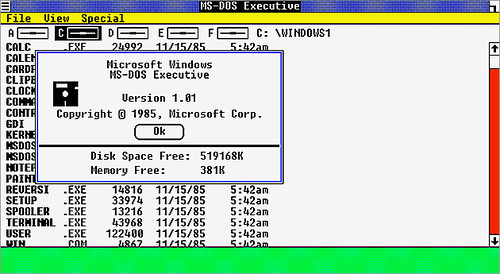Bill Gates announces Windows 1.0.
Microsoft chief Bill Gates unveils the Windows operating system for PCs. Don’t hold your breath waiting until you can buy a copy … unless you can hold your breath for two years.
Gates, Microsoft’s president and board chairman, held an elaborate event at New York City’s posh Helmsley Palace Hotel. The debutante at this ball was an operating system with a graphical user interface.
A History of Microsoft Windows Photo Gallery
BSOD Through the AgesIf you were struggling with the arcane and unfriendly MS-DOS, you were ready to get something that was easier to drive. Typing commands at the C prompt may have been a piece of C:\ake for programmers and geeks, but it was a pain in the wrist for the run-of-the-mill office chair jockey.
Microsoft started working on a product first called Interface Manager in September 1981. Early prototypes used MS Word-style menus at the bottom of the screen. That changed to pulldown menus and dialogs (a la Xerox Star) in 1982.
By 1983, Microsoft was facing competition from the just-released VisiOn and the forthcoming TopView. Apple had already released Lisa, but Digital’s GEM, Quarterdeck’s DESQ, the Amiga Workbench, IBM OS/2 and Tandy DeskMate were all still in the future.


